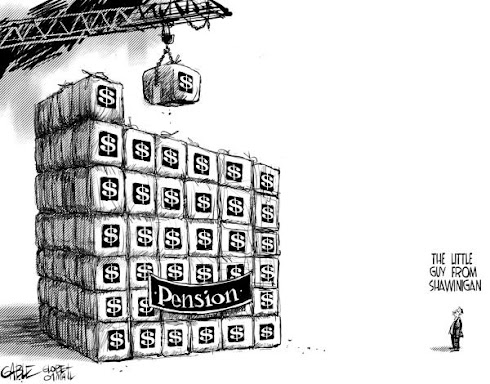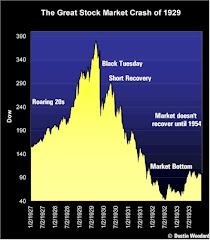Statscan produced a report called the
Wealth of Canadians (PDF). The report shows the level of preparedness of Canadians for retirement. It is based on the amount of retirement savings Canadians have put aside for their golden years.
This is a list of confusing facts and figures compiled on retirement savings in Canada. Feel free to analyze and create a create a comprehensive report of what all these numbers mean. The bottom line is Canadians have manged to save about $37,000 into their personal retirement accounts while contributing into and creating public sector employee plans worth and average of $163,000 per employee.
It appears that
Canadian taxpayers are in deep doo-doo.
RRSP Average Holdings for Canadians( for the 58% of Canadians who have them)
Age 35 - $22,500
Age 35-45 - $49,100
Age 45-54 - $ 90,300
Age 55-64 - $124,500
Age 65 and Older - $ 108,200
All age average of employer funded pension assets - $ 160,000
Based on the
Average Wages of Canadians it appears most Canadians are woefully prepare for retirement. The average working wage in Canada is slightly over $40,000 per year.
Total value of
employer pension plans $826.5 billion, loss of $128 Billion from a year previous.
Total value of
public sector pension funds $ 555 Billion
Annual contributions into pension plans in Canada $ 38.8 Billion
Considering that public sector pensions hold 67% of all pension funds, if the contributions levels are the same Canadian taxpayers funded about $25Billion into public sector pension funds last year.
Public sector pensions make up over 65% all employer-sponsored pension assets.
Public sector workers make up 20% of the workforce
Total value of
Canada's infrastructure - $286.2 billion
Including highways and roads, bridges and overpasses, water supply systems, wastewater treatment facilities and sanitary and storm sewers
Taxpayers have funded a total of $ 269 Billion more into public sector employee pension plans than they have contributed into Canada's infrastructure
Average annual contribution into public sector pension plans $ 7,269 per employee. Based on estimated annual contributions of $ 25 Billion for 3.4 million public sector employees.
Average Canadian contribution into RRSP's - $2,650
Assets in public sector pension plans in 1990 - $111 Billion
Assets in public sector pension plans in 2008 - $555.7 billion
Growth in assets in public sector plans - 500%
Percentage of workforce - 20%
Average per worker $163,000
Assets in individual registered savings plans in 1990 - $157 billion
Assets in individual registered savings plans in 2008 - $631 billion
Growth in assets - 400%
Percentage of workforce 80%
Average per worker $ 37,000
I hope my analysis of these numbers is accurate. Please let me know if you see anything out of place.








